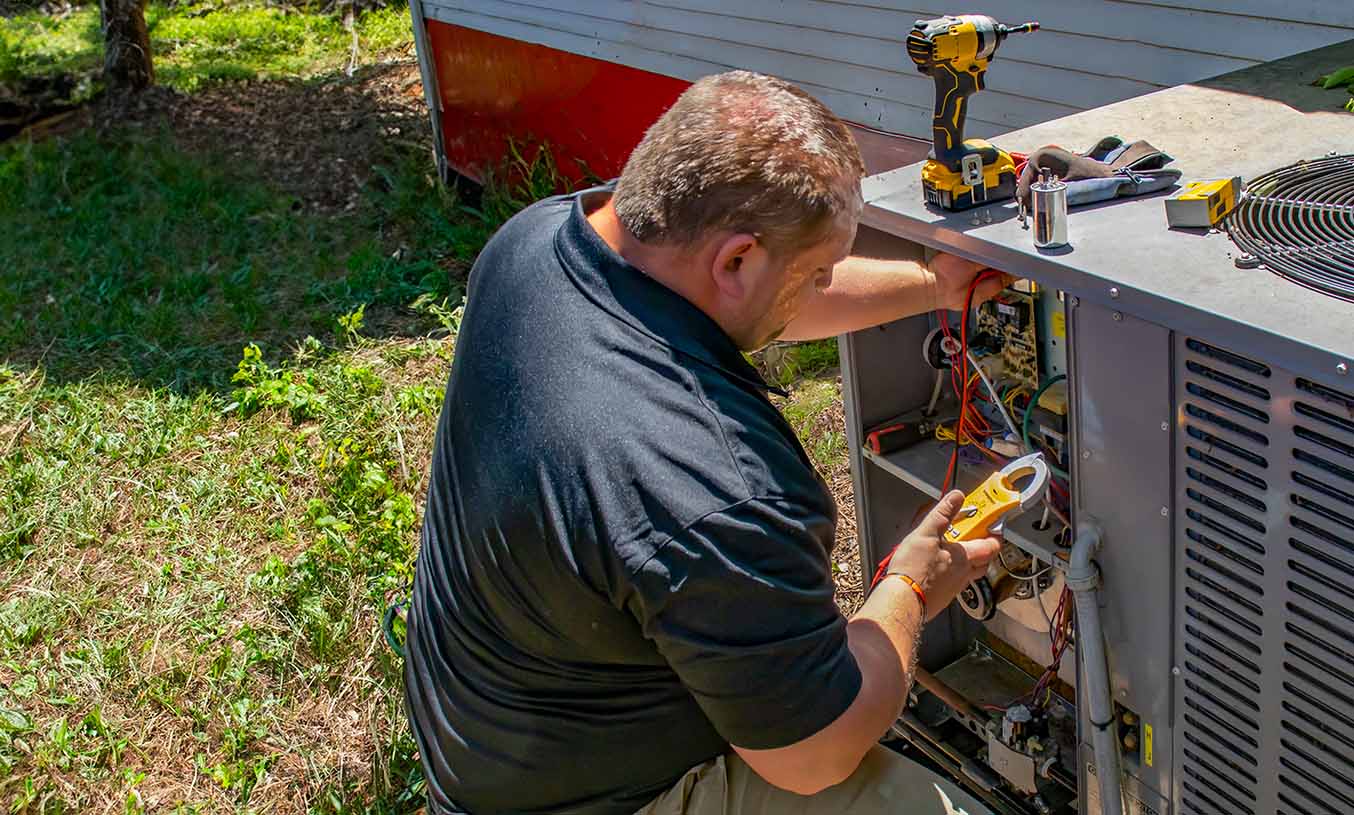

Air Conditioning Solutions
Your trusted partner for professional home services. Quality workmanship, guaranteed satisfaction.




- HEP
- Air Conditioning Solutions
Air Conditioning Solutions | Air Conditioning | Heating and Air Conditioning | Palmer
From the first warm breeze of spring to the height of an Alaskan summer, HEP keeps Palmer homes perfectly chilled with reliable air conditioning solutions. Our local, certified technicians arrive on time, diagnose issues quickly, and recommend energy-efficient options that lower utility bills without sacrificing comfort. Whether you need a precision tune-up, a fast repair, or a complete system upgrade, we tailor every service to your budget and the unique demands of Palmer’s climate.
Choosing HEP means 24/7 emergency support, transparent pricing, and workmanship that stands up to the long haul. We install high-performance units from trusted brands, integrate smart thermostats for effortless control, and back everything with generous warranties and our satisfaction guarantee. Stay cool, breathe easier, and enjoy peace of mind all season long—experience the HEP difference today.
FAQs
What type of air-conditioning system works best in Palmer’s climate?
Palmer experiences cool, dry summers and long, cold winters, so we recommend high-efficiency heat-pump systems that provide both cooling and heating. Modern cold-climate air-source heat pumps (including ductless mini-splits) deliver reliable cooling when outside temperatures climb above 70 °F and still supply heat when they drop well below freezing, eliminating the need for separate systems. They use inverter technology to modulate output, saving up to 30% on energy compared with conventional ACs and furnaces. If your home already has ducts in good condition, a central heat-pump system may be most cost-effective; if not, ductless units avoid the expense of ductwork while offering zoned comfort.
How often should my air conditioner be serviced?
We advise homeowners in Palmer to schedule professional maintenance once a year, ideally in early spring before the first warm spell. Annual service includes cleaning the indoor and outdoor coils, checking refrigerant charge, tightening electrical connections, lubricating moving parts, testing thermostat calibration, and inspecting the condensate drain. Regular maintenance prevents up to 80% of breakdowns, preserves the manufacturer’s warranty, and can improve system efficiency by 15–20%, which is especially important in a market where electricity costs are higher than the national average.
Are ductless mini-split systems suitable for older or retrofit homes?
Yes. Ductless mini-splits are an excellent solution for Palmer’s older homes that lack existing ductwork or have limited attic/basement space. A small 3-inch wall penetration carries the refrigerant and power lines, so installation is minimally invasive. Each indoor air handler operates independently, giving you zoned temperature control and eliminating the energy losses associated with leaky ducts. Because the outdoor compressors are variable-speed, they run quietly and maintain steady comfort even during cool Alaskan evenings when traditional systems may short-cycle. Many units are ENERGY STAR® certified and qualify for local utility rebates.
Can my air-conditioning system also improve indoor air quality?
Absolutely. We can integrate high-MERV pleated filters, UV-C lamps, and whole-home ERV (energy-recovery ventilator) modules with your AC or heat pump. High-MERV filters capture fine pollen, dust, and pet dander common during Palmer’s dry summer months. UV-C lamps installed in the air handler neutralize mold spores and bacteria on the coil surface, preventing musty odors. An ERV provides controlled fresh-air exchange without a big energy penalty, balancing humidity levels to reduce static electricity and respiratory irritation. Regular filter changes—every 60–90 days in summer—are essential to maintain both air quality and system efficiency.
What rebates or tax incentives are available for energy-efficient AC installations in Palmer?
Matanuska Electric Association (MEA) currently offers rebates up to $1,000 for qualifying cold-climate air-source heat pumps with a minimum HSPF2 of 8.5 and SEER2 of 15. The Inflation Reduction Act’s federal 25C tax credit covers 30% of the installed cost—up to $2,000—for heat pumps meeting ENERGY STAR® criteria. Low- to moderate-income households may also access the HOMES rebate program (launching later this year) for additional savings. We handle all paperwork, provide AHRI certificates, and ensure your new system is properly registered so you receive every dollar you’re entitled to.
How do I decide whether to repair or replace my existing AC unit?
Consider age, efficiency, and repair frequency. If your air conditioner is over 12–15 years old, uses phased-out R-22 refrigerant, or has a SEER rating below 13, replacement is usually the smarter long-term move—especially with today’s incentives. Multiply the quoted repair cost by the system’s age in years; if the result exceeds $5,000, replacement typically makes financial sense. Also check your utility bills: a new high-efficiency heat pump can cut cooling costs by 30–40% and heating costs by up to 60%. We provide a free load calculation, lifecycle cost comparison, and honest recommendation so you can make an informed choice.